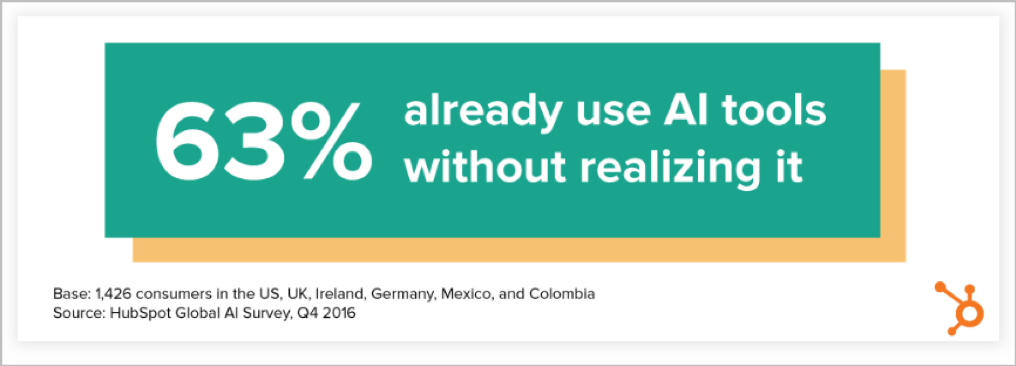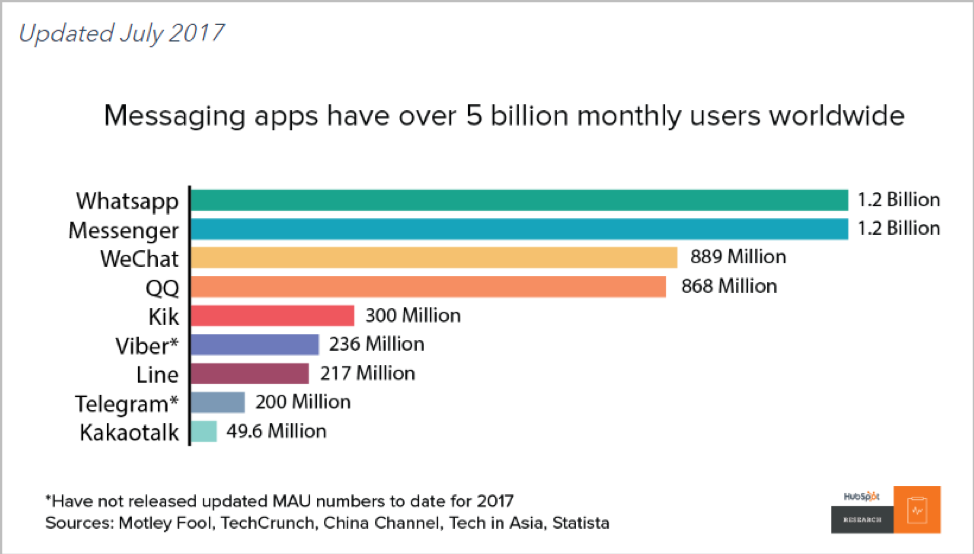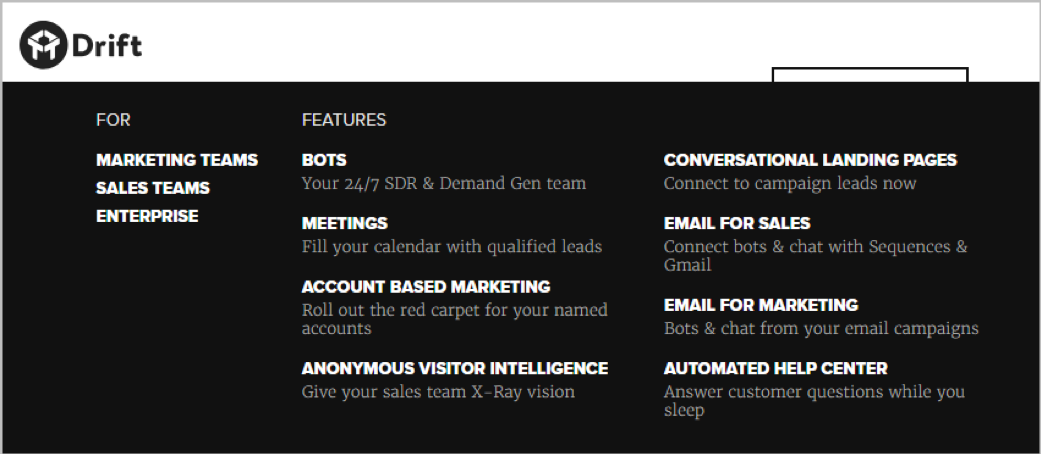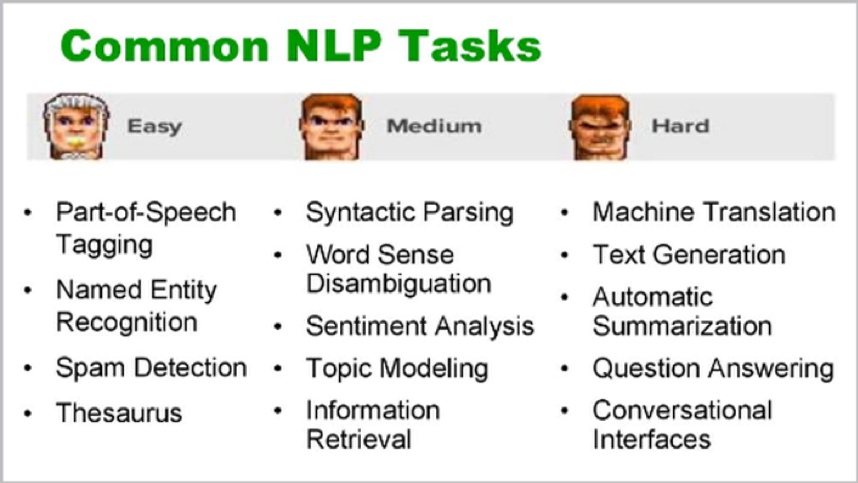The future is now with chatbots, so you need to consider how you can use the technology to improve lead generation
In case you haven’t heard, AI’s promise isn’t based on future advances. It’s being used widely now to transform digital businesses. Powered by smart algorithms and machine learning, chatbots (automated chat messaging) promise to allow companies to connect with their prospects even better than humans can, while at the same time dramatically lowering headcount and overhead costs.
Dozens of tech companies have created chatbot platforms that serve up pre-programmed responses to questions; responses informed by things like prior website interactions, social media activity and semantic analysis. Most importantly, these bots can decipher the intent of your visitors. If you know intent, you know what to say next, which is the 'secret sauce' of lead nurturing.
Download our Business Resource – AI and Machine Learning for marketing
The guide aims to help businesses of all sizes to apply to their marketing, focusing on Artificial Intelligence. All businesses can now use the services we recommend to implement Machine Learning. The guide explains why, how with an actionable and practical approach.
Access the AI and Machine Learning for marketing briefing
Here I share how AI-based chatbots are completely transforming lead generation for SaaS-based businesses. I really mean transforming, to the degree that if you continue to do lead-generation the current way, you’ll soon start losing leads to competitors who do it the new way.
Some surprising stats
Time for your AI wake-up call. According to a 2016 survey done by marketing automation platform provider HubSpot, 63% of people using AI technologies didn’t even know they were using them. Talk about transparent technology!

Specifically, the study found that:
- Use of voice search has seriously increased, so SEO/SERP professionals need to take notice. Siri, Google Voice, Alexa and the like have obviously driven this.
- Consumers are comfortable buying from a bot that provides customized service.
- People are very open to using AI-enabled bots for customer service, particularly for straightforward requests and questions.
Fueled by the popularity of SnapChat and Facebook Messenger, online messaging has exploded in the past few years. Messaging has clearly become the app type to take notice of.

If you sell to Millennials or teenagers, you know messaging is their de-facto way of communicating. It's their smartphone-driven messaging habits that will drive marketing dialog in the coming years.
The current way of collecting leads
Consider the current way of collecting and qualifying leads for prospective SaaS customers. It typically involves:
- Creating dedicated landing pages.
- Investing in SEO, PPC and social ads to get traffic to these pages.
- Offering a value-added download on these pages via a lead form.
- Capturing lead contact information - name, email, phone number, etc.
- Following up with the lead through a sequence of nurturing emails.
- Phoning the more 'engaged' leads to close sales.
In this process sales teams often:
- Get a lot of bogus (or non-business) email addresses and phone numbers.
- Talk to a lot of unqualified prospects who aren’t a good fit for their product (insufficient authority, budget, etc.).
- Play a lot of time-wasting 'voicemail tag'.
This can lead to some pretty frustrated account executives. Not only are they annoyed, but they’re also not able to convert enough of their leads.
Clearly, it’s time for a smarter way to interact with leads. Enter chatbots.

The new and better way
The AI-based way to capture and nurture your leads involves:
- Offering chatbots to visitors at applicable times on websites and landing pages.
- Asking the visitors who engage for their email and some qualifying questions.
- Learning more about the lead through data appends (CRM, social, other).
- Passing the visitors to the next step in the process - whether it’s a human rep, an email capture (so the bot can send content of interest), or something else.
- Switching on your lead nurturing and conversion machine (of which content marketing is usually a key part).
This new process doesn’t mean that humans are never in the loop. It just means that they’re handed more qualified and informed leads, which are then easier to convert.
What exactly do these bots do?
The original chatbots (from just a few years ago) delivered an automated and more efficient online chat experience. After some time and algorithmic turning, they did that pretty well. Now, offerings from leading chatbot platform providers like Bold360, Drift and 247ai, through integrations with leading CRMs, calendar apps, email providers and third-party data sources, are providing more full-featured customer service. In a recent Forbes.com article, contributor Macief Duraj asserts that chatbots and cloud-based CRMs are even replacing some call centers.
This screenshot summarizes the features offered by Drift.com, a leading full-service chatbot platform provider.

Now I’ll walk through each of these key features in detail.
Messaging
I’ve already talked about messaging being the prime communication mode going forward. Super-speedy chatbots definitely put the 'instant' in this messaging.
The best chatbots include the ability to:
- Add someone else (e.g. from your Slack contacts list) to a conversation.
- Auto-email conversations after a period of inactivity (e.g. 15 minutes).
- Infer intent from complex language and deliver conversational replies.
- Offer proactive chat, at places in the experience known to have higher engagement.
The makers of Bold360, for example, learned that proactive chatters are six times more likely to buy than average website visitors, so they bolstered their app’s proactive chat engine with powerful features and AI capabilities, all with the goal of targeting each visitor with the right message at the right time.
Automatically schedule meetings
The best chatbots integrate with your calendar and conferencing apps like Calendly, Assistant.to and Zoom so that, at the appropriate time in the chat experience, your bot can send a call scheduling link to the visitor.
Based on my personal experience, this is a huge time saver. Best of all, it frees you and your administrative staff up to do more valuable work.
Integrate with your customer-facing tools
Speaking of integrations, the leading chatbots offer API-level integrations with your customer-facing apps, such as:
- Google calendar - for scheduling meetings.
- CRMs - for visibility into customer contact activity.
- Marketing automation suites - like HubSpot and Marketo.
- Social media accounts (through data appends - more on that below).
- E-commerce stores - like Spotify, to access transactional data.
- Knowledge bases - to quickly refer prospects to useful articles.
For example, by integrating with a CRM app like Salesforce, SugarCRM or Zendesk, your chatbot can directly pull customer and prospect data into your sales rep’s workspace.
Append third-party data
Using only the email entered, capable chatbot platforms can leverage third-party apps to append data such as Full Name, Location, Job Title, Company Information and links to social profiles.
Some data append vendors even offer predictive models and lead scoring algorithms, which help you prioritize the leads with which your chatbot should engage. Even better, they can do this in real time. Together with the transactional data fed in from your CRM, these tie-ins give your reps a more well-rounded picture of your prospects, which help to build rapport and increase close rates.

Infer visitor sentiment and intent
Perhaps the coolest feature of the latest chatbots is their ability to do semantic analysis - that is, to deduce the visitor’s intent based on words and phrases used in the current and previous conversations. This 'thinking' part of the AI algorithms used in chatbots is what makes them 'relational concierges' in the sales process.
The chatbot offered by LivePerson, for example, calculates a Meaningful Connection Score, or MCS, as early as possible in the discussion with each visitor. Each message sent by a visitor is analyzed in real time and gets a positive or negative score. Messages’ scores are continuously combined to determine the emotional content of the conversation, resulting in an 'Overall MCS' at the end of each discussion. A higher MCS score means this lead’s more interested in what you’re selling.
Qualify your leads
The main point of your interactions with prospects, of course, is to generate more qualified leads. By asking qualifying questions tailored to your solution context and prospect personas - like 'which of these situations best describes you?' (prospect persona), 'how large is your company?,' and how soon are you looking to purchase a [XYZ] solution?' - and tailoring the follow-up messaging accordingly, these apps let visitors self-select whether they’re a good fit for a given product.
By doing so, they avoid wasting everyone’s time: reps, account executives and prospects and they build trust. Don’t you respect someone more when they determine they’re not the best solution for you, and they even refer you to another vendor?
Bonus features: Good looks and a great personality
According to Hans van Dam of Chatbots Magazine, some platforms allow you to choose a persona or online personality for your chatbot, which includes the right mix of personality attributes like directness, empathy, helpfulness and persuasiveness. Van Dam’s company, Robocopy, even developed a 'bot scorecard' that 'Conversation Designers' (yes, that’s a new, chatbot-inspired job title) can use to evaluate their work.
For example, an e-commerce store could configure their customer service rep to have a persona with more empathy and helpfulness. A SaaS seller, on the other hand, might configure their account executive bot to be more direct and persuasive.
In addition, most chatbot apps, for paid subscriptions, allow you to customize your chatbot’s visual 'look and feel' and branding (including adding your company logo). Since every chat is a touchpoint in your customer’s journey, brand-first impressions matter.
It’s a bot time
The writing’s on the wall. Actually, it’s in your Slack conversations and Facebook messages. Now’s the time to embrace AI-based chatbot interactions in your early-stage communications with your visitors. You may not be ready to let an AI-powered car drive you around town, but the latest chatbots have proven they can handle your more routine lead capture and nurturing tasks.
So, if you sell a SaaS-based product or service, consider shoving aside your fears of robots taking over the world, at least for now. Your biggest risk may be waiting too long to integrate chatbots into your marketing technology stack. If you do, your competitors’ bots may steal some of your best leads.












